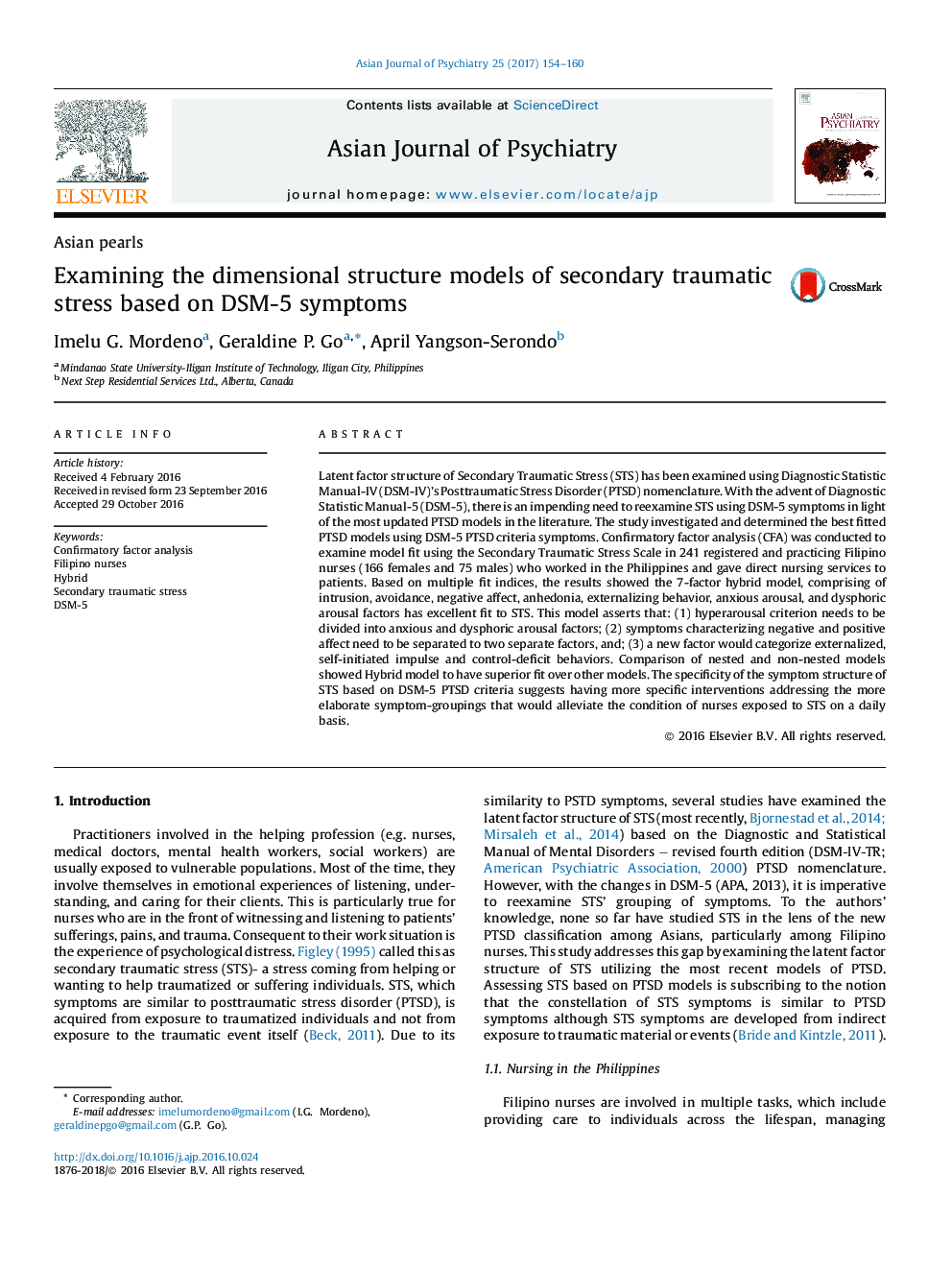| کد مقاله | کد نشریه | سال انتشار | مقاله انگلیسی | نسخه تمام متن |
|---|---|---|---|---|
| 4929809 | 1432578 | 2017 | 7 صفحه PDF | دانلود رایگان |

- Secondary traumatic stress (STS) is examined using DSM-5 PTSD models.
- Seven-factor hybrid model is the best fitted PTSD model of STS.
- The hybrid model bridges the gap of anhedonia and externalizing behavior models.
- Results suggest precise interventions which target elaborate STS symptom-groupings.
Latent factor structure of Secondary Traumatic Stress (STS) has been examined using Diagnostic Statistic Manual-IV (DSM-IV)'s Posttraumatic Stress Disorder (PTSD) nomenclature. With the advent of Diagnostic Statistic Manual-5 (DSM-5), there is an impending need to reexamine STS using DSM-5 symptoms in light of the most updated PTSD models in the literature. The study investigated and determined the best fitted PTSD models using DSM-5 PTSD criteria symptoms. Confirmatory factor analysis (CFA) was conducted to examine model fit using the Secondary Traumatic Stress Scale in 241 registered and practicing Filipino nurses (166 females and 75 males) who worked in the Philippines and gave direct nursing services to patients. Based on multiple fit indices, the results showed the 7-factor hybrid model, comprising of intrusion, avoidance, negative affect, anhedonia, externalizing behavior, anxious arousal, and dysphoric arousal factors has excellent fit to STS. This model asserts that: (1) hyperarousal criterion needs to be divided into anxious and dysphoric arousal factors; (2) symptoms characterizing negative and positive affect need to be separated to two separate factors, and; (3) a new factor would categorize externalized, self-initiated impulse and control-deficit behaviors. Comparison of nested and non-nested models showed Hybrid model to have superior fit over other models. The specificity of the symptom structure of STS based on DSM-5 PTSD criteria suggests having more specific interventions addressing the more elaborate symptom-groupings that would alleviate the condition of nurses exposed to STS on a daily basis.
Journal: Asian Journal of Psychiatry - Volume 25, February 2017, Pages 154-160